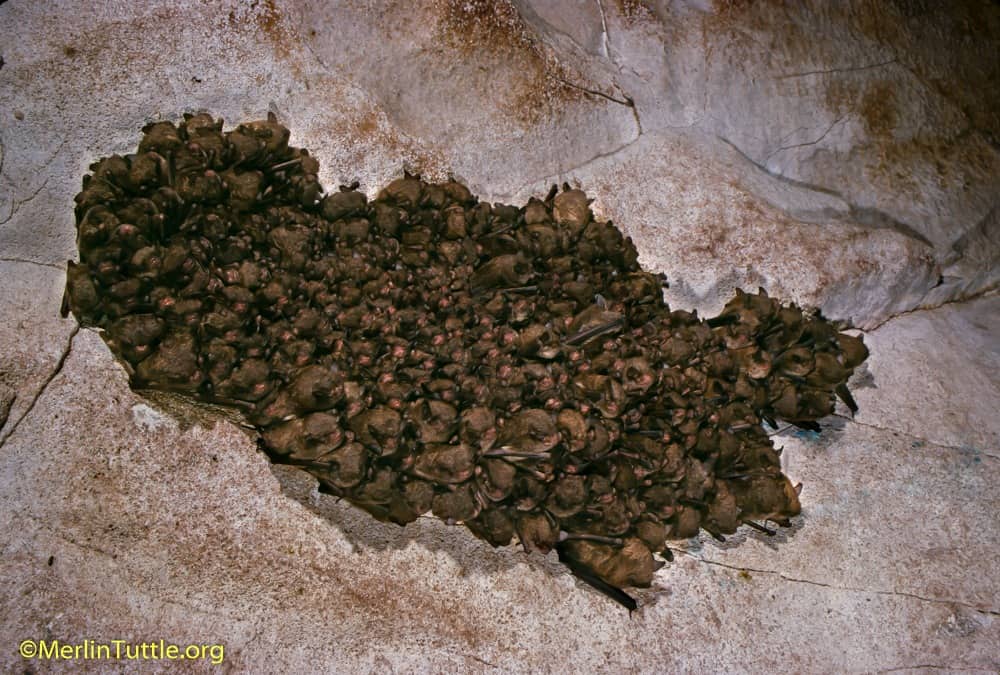The Costs of Bat Decline
Can we afford to lose bats? A recent study by Eyal Frank of the University of Chicago reveals that the dramatic decline in U.S. bat
Amid media announcements that the fungus that causes white-nose syndrome in bats has spread to California, and growing public concern, The Wildlife Society announced the most recent attempt to find a cure. On July 9, an article titled “Bacteria treatment helps bats survive white-nose syndrome,” suggested progress toward a cure. However, there is no evidence that human intervention can slow the spread or cure the disease. As I’ve reported, the best available studies from the Northeast indicate that population recovery at key sites is exceeding expectations, and that a cure is unnecessary, impractical to implement, and risks unintended negative consequences.
Several treatments appear to be effective in countering the infection in captive bats. However, when released the bats remain susceptible to reinfection and death. By releasing such bats near the end of the cycle, when only those with greatest genetic resistance remain, we would risk diluting the remaining gene pool, reducing the odds of survival, just the opposite of the intended goal.
Given the odds of unintended consequences, it may be fortunate that effective implementation of a cure in wild bat populations is so logistically hopeless as to be virtually inconceivable. We must not put funding opportunities ahead of bat needs. Finally, during this time of extreme stress, it is urgent that we recognize the importance of avoiding hibernation disturbance regardless of good intentions. I urge a reallocation of resources from cure-hunting to habitat restoration and protection, beginning with the most important hibernation sites.
I have shared my response with the The Wildlife Society and encourage others to politely do the same.

Love our content? Support us by sharing it!
Can we afford to lose bats? A recent study by Eyal Frank of the University of Chicago reveals that the dramatic decline in U.S. bat
“Just like the old days, eh Heather?” Kent softly clicks his tally counter as he sits in his folding chair on the other side of
An important new study, recently published in Science and widely covered by major newspapers like The Guardian, The Washington Post, and The New York Times, has
On March 6, 2024, the Wall Street Journal presented findings from the University of Leeds in their opinion piece, “Why Scientists Love Chasing Bats; The
2024 © Merlin Tuttle’s Bat Conservation. All rights reserved.
Madelline Mathis has a degree in environmental studies from Rollins College and a passion for wildlife conservation. She is an outstanding nature photographer who has worked extensively with Merlin and other MTBC staff studying and photographing bats in Mozambique, Cuba, Costa Rica, and Texas. Following college graduation, she was employed as an environmental specialist for the Florida Department of Environmental Protection. She subsequently founded the Florida chapter of the International DarkSky Association and currently serves on the board of DarkSky Texas. She also serves on the board of Houston Wilderness and was appointed to the Austin Water Resource Community Planning Task Force.
Michael Lazari Karapetian has over twenty years of investment management experience. He has a degree in business management, is a certified NBA agent, and gained early experience as a money manager for the Bank of America where he established model portfolios for high-net-worth clients. In 2003 he founded Lazari Capital Management, Inc. and Lazari Asset Management, Inc. He is President and CIO of both and manages over a half a billion in assets. In his personal time he champions philanthropic causes. He serves on the board of Moravian College and has a strong affinity for wildlife, both funding and volunteering on behalf of endangered species.